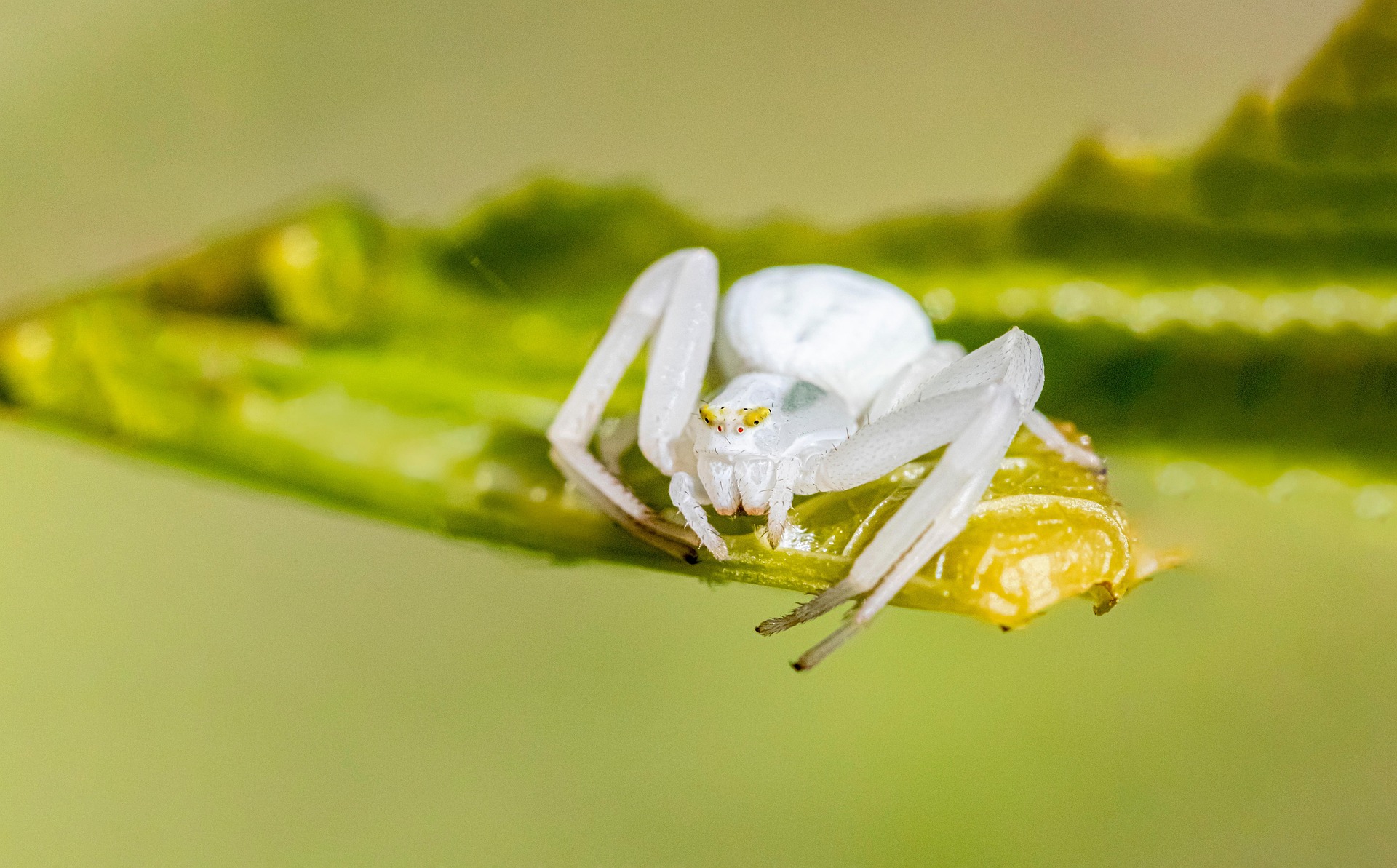🕷️ Goldenrod Crab Spider (Misumena vatia)
The Goldenrod Crab Spider, Misumena vatia, is one of the most striking and skilled ambush predators among spiders. Named for its crab-like stance and ability to blend into yellow or white flowers like goldenrod and daisies, it is a master of camouflage and a vital component of temperate ecosystems.
🔍 Identification
- Size:
- Females: ~7–10 mm long
- Males: Smaller, ~3–5 mm
- Coloration:
- Can be white, yellow, or even pale green
- Females change color over several days to match the flower they sit on
- Sometimes show red or pink stripes on the abdomen
- Body Shape:
- Wide, flattened body
- Front legs are long and extended sideways like a crab’s claws
🌍 Distribution & Habitat
- Range:
- Found across North America and Europe
- Habitat:
- Prefers meadows, gardens, forest edges, and flowering plants
- Often sits motionless on flowers, waiting for pollinators
🕸️ Behavior & Ecology
- Hunting Style:
- Ambush predator – does not spin webs to catch prey
- Waits on flowerheads and captures insects with a sudden grab from its front legs
- Common prey: bees, flies, butterflies, and other pollinators
- Camouflage:
- Females can change color (yellow ↔ white) based on the flower they inhabit
- Color change takes a few days and is driven by visual cues and hormone regulation
- Reproduction:
- Males are much smaller and often wander in search of females
- After mating, the female lays eggs in a hidden spot and guards the sac until she dies
🛡️ Adaptations
- Excellent vision: Helps detect approaching prey
- Venomous bite: Subdues insects quickly, though harmless to humans
- Camouflage: Provides both protection and a hunting advantage
📌 Interesting Facts
- The Goldenrod Crab Spider is often seen in late spring through early fall, sitting on yellow composites or white daisies.
- Despite being small and lacking a web, it can take down prey several times its size.
- It’s a key predator in wildflower ecosystems and indirectly affects pollination patterns.
🧠 Summary
The Goldenrod Crab Spider (Misumena vatia) is a brilliant example of nature’s ingenuity, perfectly adapted to a life of stillness, stealth, and striking efficiency. Its color-changing ability, unique hunting method, and ecological role make it one of the most fascinating spiders you might spot blending into a summer bloom.
Visited 59 times, 1 visit(s) today
Views: 509
Subscribe to the newsletter:
